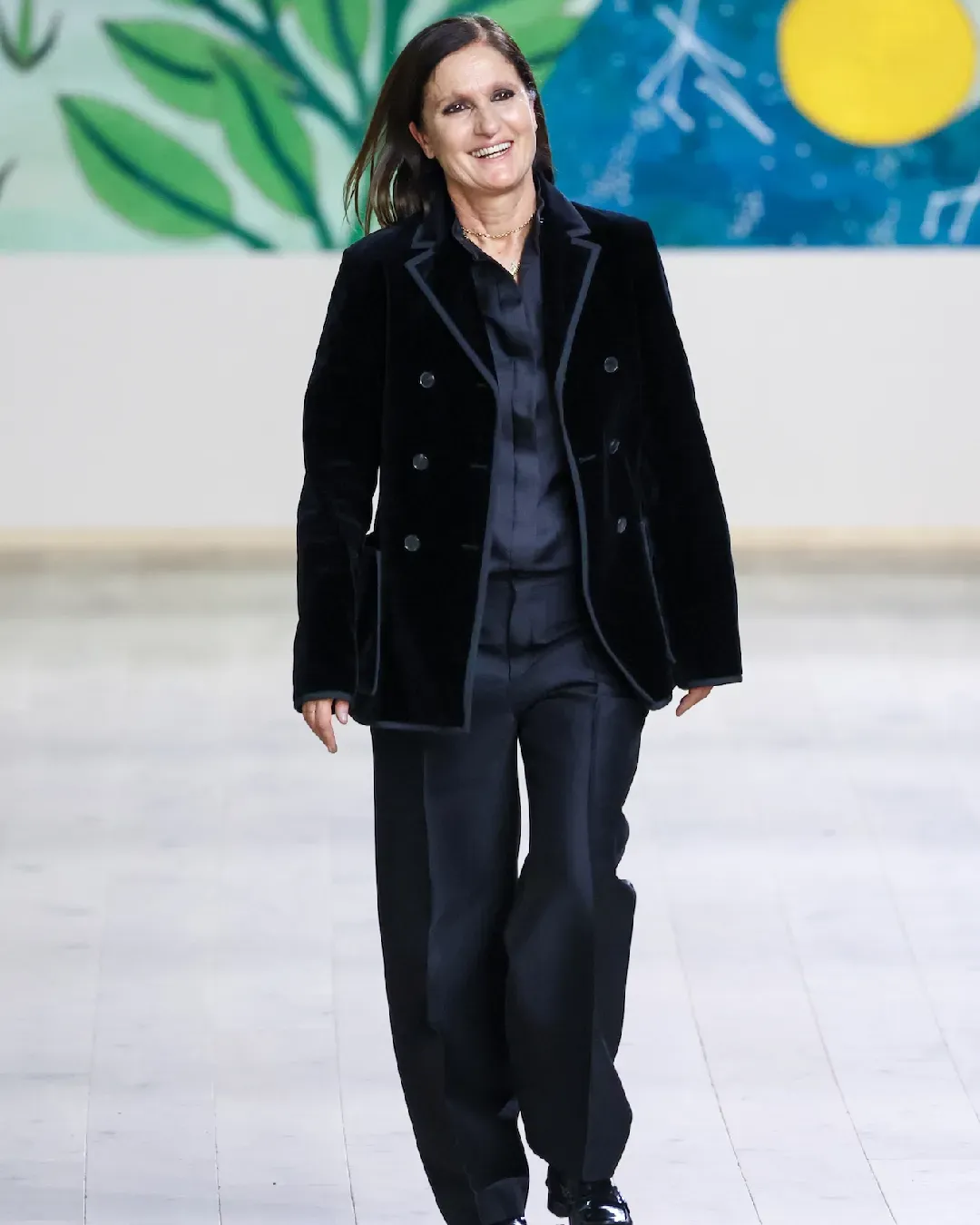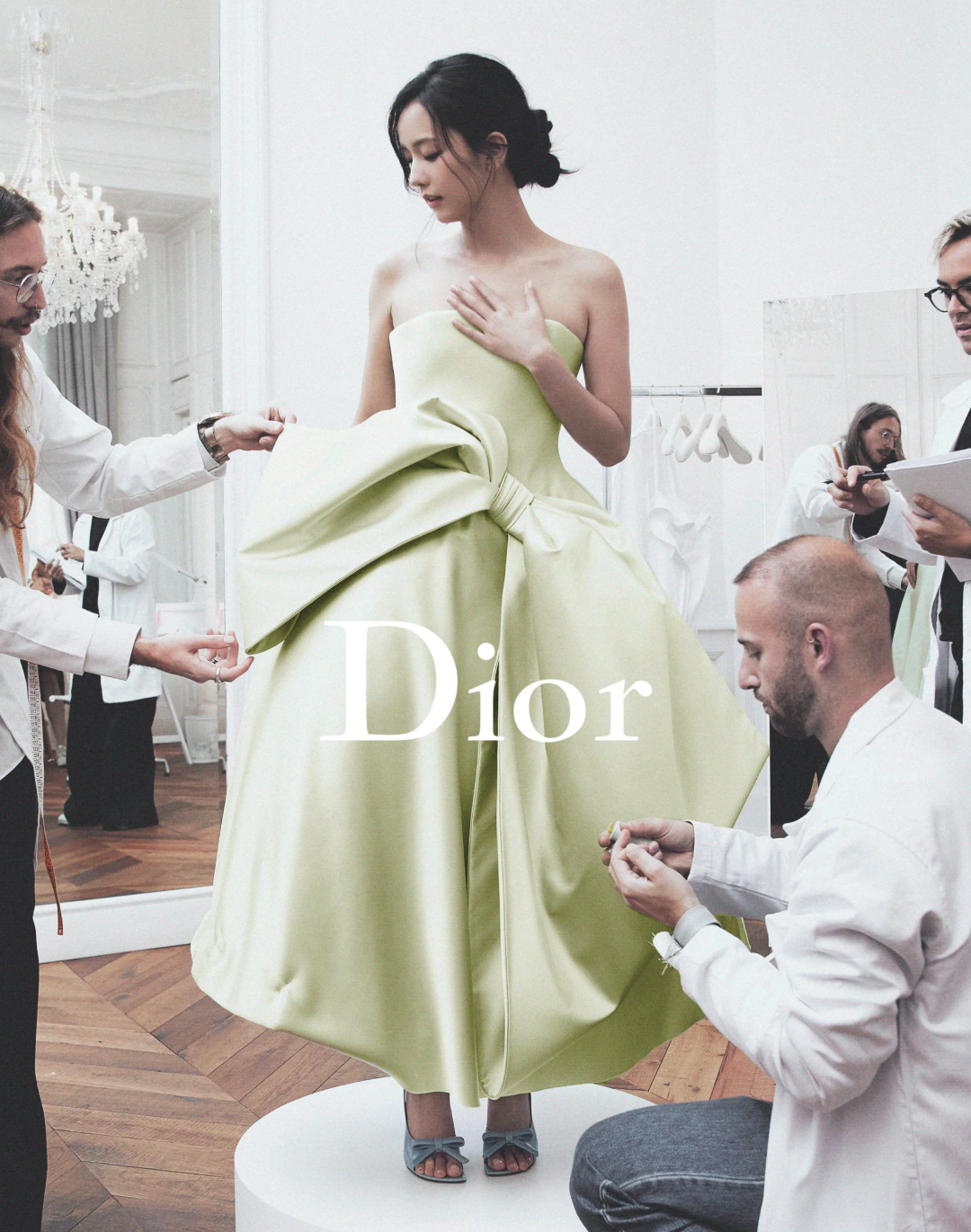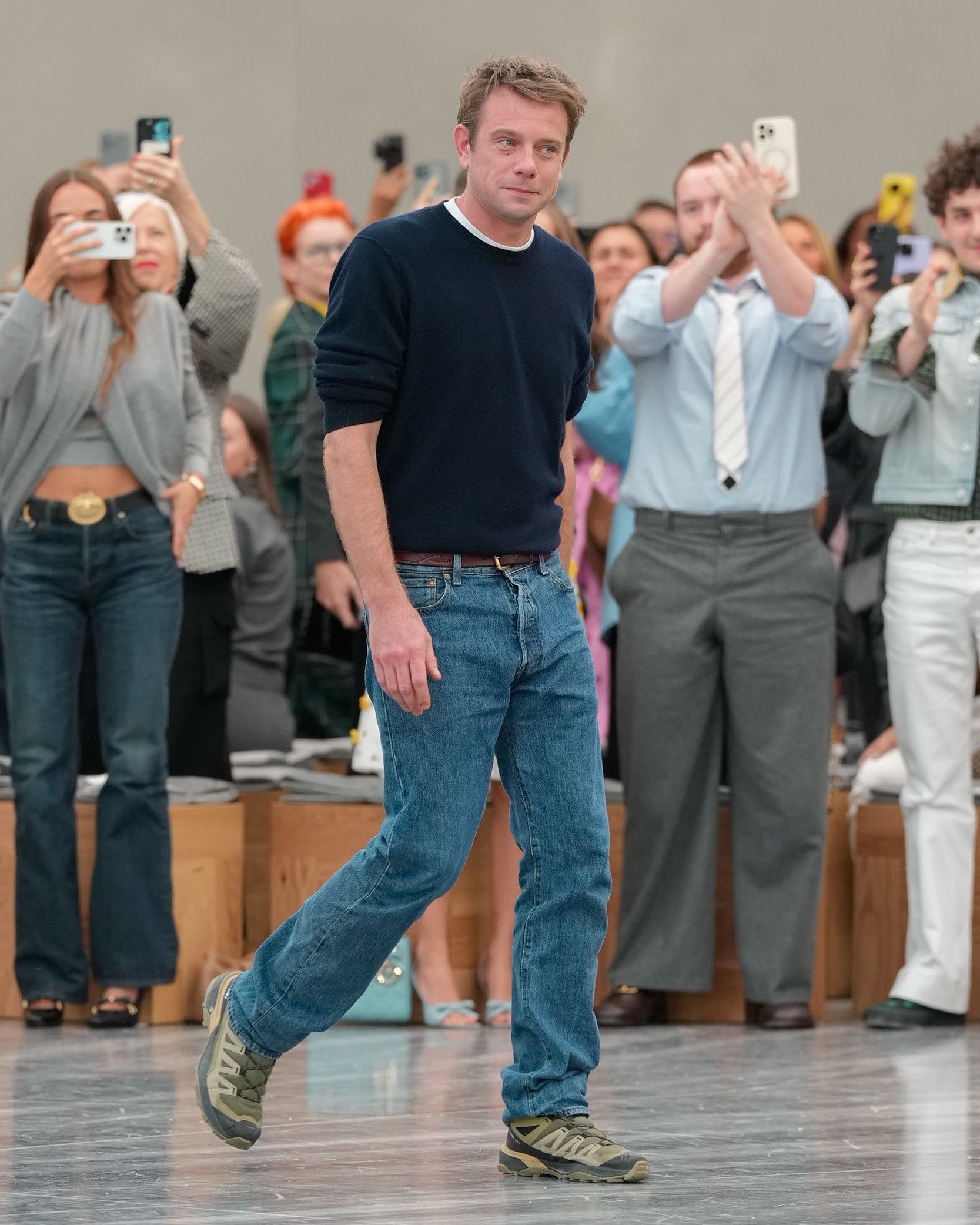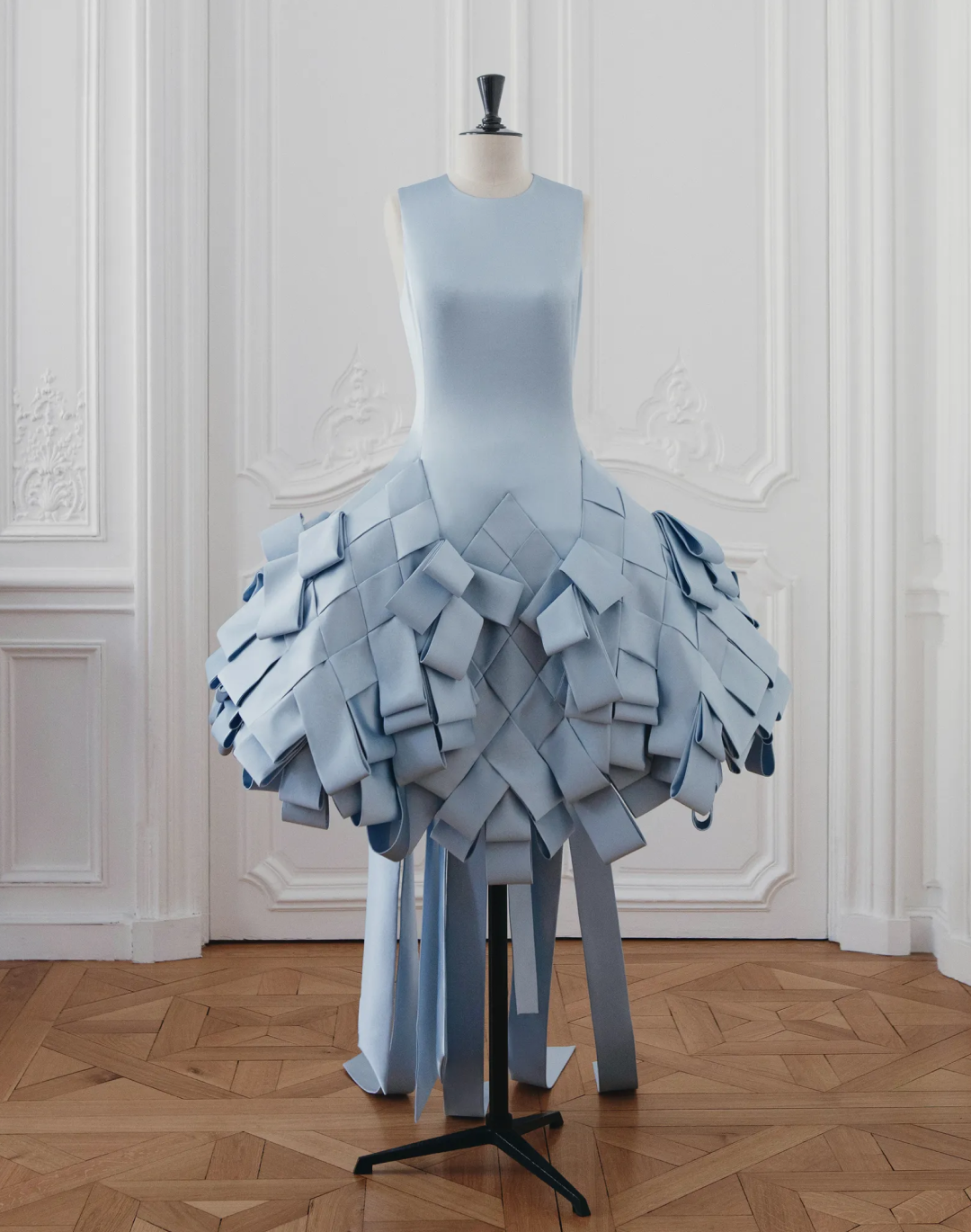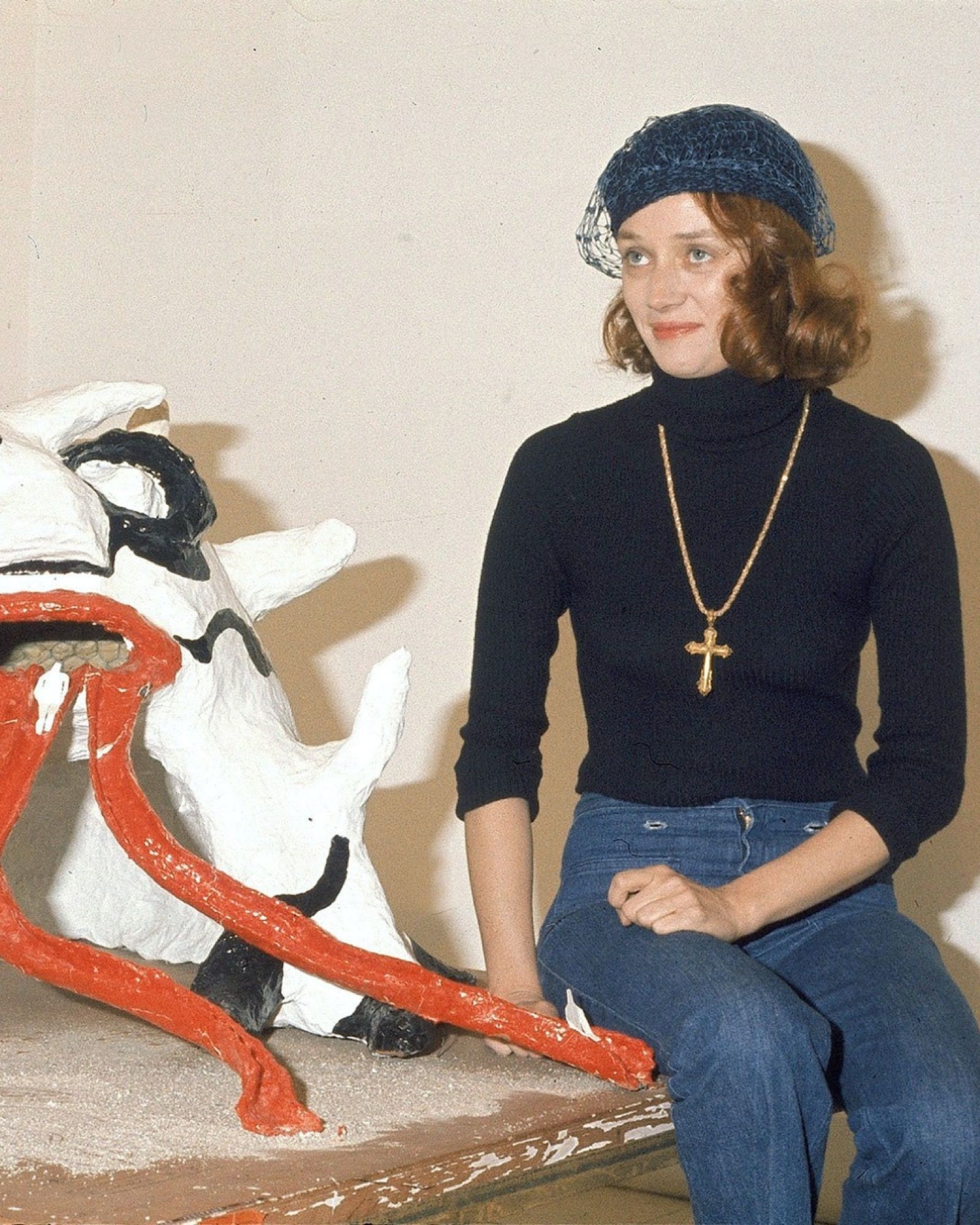
The link between sculpture and fashion by Niki de Saint Phalle Today, she signs a capsule collection for Dior
A woman of her time, insightful, fearless, and creative. Born in 1930, Niki de Saint Phalle embodies a beacon of the first wave of 20th-century feminism, committed to exploring women's roles through her art while confronting her own childhood traumas. Long before entering the art world, Saint Phalle was immersed in both the fashion and cinema scenes. Her unique journey gave her an incredibly distinctive vision, inevitably shaping an extremely avant-garde person at a time when self-expression could be limited. Though her roots are 100% French, the Saint Phalle family moved to New York a few months after their daughter's birth due to economic pressures related to the Great Depression. In 1937, she joined the family as they integrated into the upscale Upper East Side neighborhood. Despite their privileges, life in the family home was difficult. Children suffered abuse, becoming so tense that Niki was forced to move in with her grandparents. Between her strict upbringing and her time in New York's Catholic and private schools, Saint Phalle found her way, drawing deeply from within herself to find confidence and self-esteem that were never nurtured by her environment. Through her expressive style, on and off the canvas, Saint Phalle carved out a place in a male-dominated world, becoming a symbol of flowery rebellion and stylish manifestation. Today, Parisians can discover her works daily in front of the colorful Stravinsky Fountain, outside the Centre Pompidou.
@tapage L’artiste engagée Niki de Saint Phalle 1 - Journaliste macho - 0 #art #repartie #feminisme #archivesina #artiste - Crédits vidéos : @INA son original - tapage
At 18, she became a model, appearing on the cover of Vogue France, Elle, and Harper's Bazaar. In the 1950s, her career prospered as she confidently sported the look of the decade, both adolescent, sophisticated, and bohemian, becoming the perfect muse for Marc Bohan, the French designer at the helm of Dior. After a few years, Saint Phalle broke off her fashion career, but she always maintained relationships and contacts in the fashion industry. She began with oil paintings before being drawn to more avant-garde abstract art after encountering the works of Marcel Duchamp, Jackson Pollock, Antoni Gaudi, and Jean Tinguely. The early 1960s marked her series of Tirs, an assembly of painted targets within collages. Later, she would suspend bags of paint in front of white canvases, and once shot, the colors would burst. The works quickly became public performances, transforming these moments into public performances, inviting other artists and spectators to participate by aiming and shooting at her artistic targets. Her dark and bold performances caught the attention of other renowned artists, and she soon became the only female member of the Nouveau réalisme movement, led by Pierre Restany. From there, Saint Phalle explored women's roles in contemporary society with her Nanas series. These sculptures became her most prolific works, inspiring generations of women and serving as references for some of the world's top designers. However, her entire portfolio eventually graced the runways. More recently, Maria Grazia Chiuri drew inspiration from the artist for Dior, building on the historical relationship between the artist and the house.
When Art Translates to the Runway
@sight_unseen_ Mind blown
Using vibrant and contrasting colors, evoking Saint Laurent's Mondrian dress, Saint Phalle's creations can serve as reference points for any contemporary designer seeking to push boundaries in terms of color, shape, or construction. In 2016, American designer Johnson Hartig of Libertine delved into the artist's portfolio to incorporate elements into dresses, creating a graphic collection of pieces using artistic symbols synonymous with the artist's collages, drawings, and paintings, including the open hand, heart, sun, etc. That same year, Japanese designer Anna Sui integrated elements from Saint Phalle's Nanas series into dresses and capes, creating new silhouettes on models based on the grand proportions used by the artist to create the series. Not to forget Sonia Rykiel's Fall-Winter 2017 runway show in Paris, where Julie de Libran drew inspiration from the artist's bohemian-chic personal style rather than her artistic works. The most iconic translation of the artist's works onto the runway comes from Dior, with Maria Grazia Chiuri building on the historical alliance between Marc Bohan and Saint Phalle. Chiuri's first nod to the artist dates back to the Fall/Winter 2018 ready-to-wear collection. The runway took place in an artificial cave recreated in the gardens of the Rodin Museum with walls covered in mirror shards, reminiscent of those embellished by Niki de Saint Phalle in Hanover. It all began with a question printed on a sailor-style top: "Why Have There Been No Great Women Artists?" - a nod to a 1971 article by American art historian Linda Nochlin, a question that struck Dior's creative director, prompting her to examine why women have long been marginalized in the creative world. This led her to Saint Phalle, who boldly overcame obstacles to make a name for herself in a male-dominated space without hesitation. What followed was a series of looks echoing the artist's personal style, including her outfits as she fired paint-filled guns at white canvases, as well as the symbols and graphic elements she often used in her work.
More recently, Dior has just announced the launch of a new capsule collection, again inspired by Niki de Saint Phalle. Now inspired by the artist's drawings, Chiuri has envisioned a series of embroidered ready-to-wear pieces featuring images of three works: Tu Es Mon Dragon, Strength, and Foulard Zodiaque. Challenging the idea of wearable art, imprinting Saint Phalle's famous dragon on sailor-style tops, an element of the artist's personal style, but also on the iconic Lady Dior bag and the Dior book tote. An elegant silk square has also been imagined, featuring motifs from Foulard Zodiaque creatively and colorfully representing the various zodiac signs, evoking a sense of wonder and the artist's childlike imagination. The collection is completed by a classic hoodie, jumpsuits, and knits, all adorned with these famous images. Surely, this won't be the last collection inspired by an artist that we'll see from Dior.











































